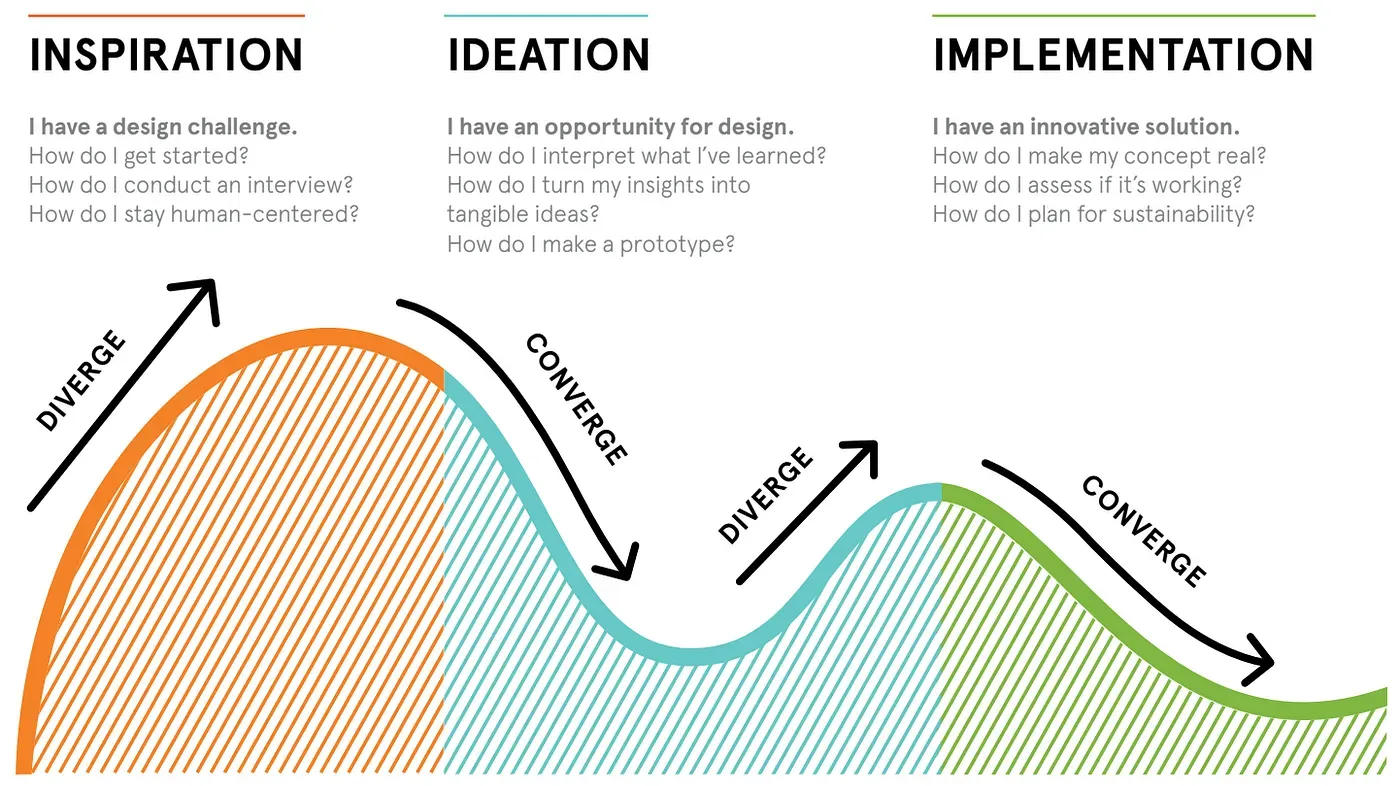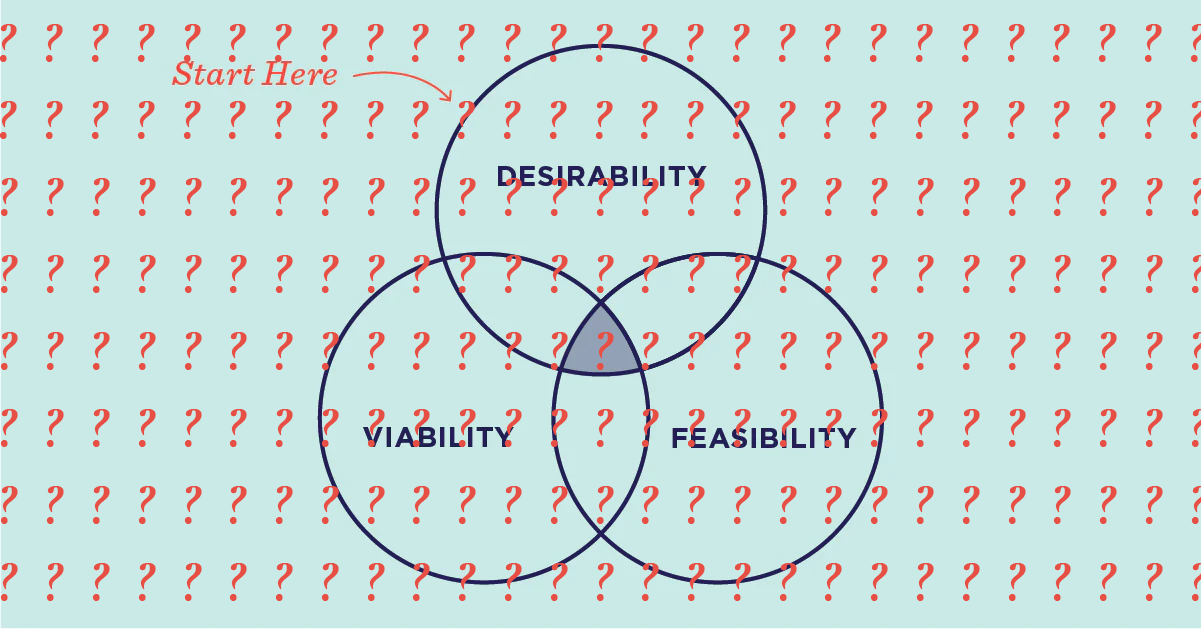Design thinking has been the status quo, nay the gold standard problem-solving approach adopted and embraced across industries for decades now. While the roots of design thinking can be traced back to design and architectural disciplines in the 1950s and 1960s, it was largely popularized by the design consultancy firm IDEO in the 1990s. Primarily seen as a problem-solving methodology that valued empathy, ideation, and prototyping, IDEO brought design thinking to the forefront, showcasing the power and success of a human-centered approach for creating solutions to challenges at every scale.
At its core, Design thinking encourages a collaborative and iterative approach to problem-solving. It emphasizes understanding the needs and perspectives of end-users, prototyping and rapidly testing an array of possible solutions, and iterating based on feedback. Once hailed as revolutionary, this methodology has been implemented across diverse industries, from business to healthcare.

While not dismissing or diminishing the value of a human-centered approach to problem-solving, it is difficult to ignore the data-driven elephant in the room – Artificial Intelligence.
AI is quickly emerging as a widespread disruptor that will have lasting and systemic impacts on how we communicate, behave, and interact, to say nothing of how we produce and consume information. The implications of AI’s integration into our daily lives are vast, from automating routine tasks to augmenting human capabilities. AI is not just a tool; it's a catalyst for change in the very fabric of our existence.
Information is no longer static; it's dynamic, constantly evolving and adapting. The speed at which data is processed, and insights are generated challenges traditional problem-solving approaches ‘championed by design thinking. AI, with its ability to process immense amounts of data at unprecedented speeds, accelerates problem-solving processes. While Design Thinking thrives on iteration and subjective exploration reliant on human-driven insights, the rapid pace of AI may outstrip the method's core processes. The demand for instant insights and solutions may challenge design thinking’s deliberate and thoughtful approach.
Is the recent shift in IDEO’s own core business and mode of operation evidence of this shift?
Acquired by Kyi, an operating unit of the Japanese holding company Hakuhodo DY Holdings, in 2016, IDEO has been hemorrhaging staff throughout 2023. Additionally, they have closed offices in Tokyo and Munich.
Touting their design thinking approach, IDEO garnered a remarkable reputation for providing their high-end clients such as Pepsi, Nokia, Intell, Proctor and Gamble, Samsung, and Ford with strategies for success. Of course, the development of actual products or services was left to the client company following IDEO’s delivery of a blueprint for success.
In an apparent shift from a tried-and-true design consultancy firm to a media agency, Derek Robson, IDEO CEO, asserts, “With the right partner, we intend to build and scale a media brand, building on our legacy of thought leadership that will become a new source of revenue and drive demand for our consulting business.”
There are a number of issues to be cited that have had a potential impact on the firm's change in direction, from DEI issues to more companies developing in-house units to support what was previously provided by IDEO. Nonetheless, the emergence of AI, in a sort of misalignment with design thinking, stands out as the seminal issue.
Design thinking traditionally relies on qualitative insights gathered through empathy and observation. AI, on the other hand, thrives on quantitative data. AI algorithms can generate design options, predict user preferences, and automate certain aspects of the prototyping phase. However, critical insights derived from the subjective lived human experience may be lost. The shift towards data-driven decision-making may marginalize the qualitative aspects of design thinking, raising questions about its adaptability in a data-centric environment.
While the demise of design thinking as the quintessential problem-solving approach is far from a foregone conclusion, it is an undeniable fact that AI will have a pervasive impact on the future ways in which we will conceive of problems and their potential solutions. Is there space for a hybrid methodology to emerge? One that preserves the human-centric focus while incorporating or rather integrating into the AI paradigm?
The potential of a new problem-solving approach or methodology that could effectively be used across industries may soon be less of a fantasy and more of a necessity.





